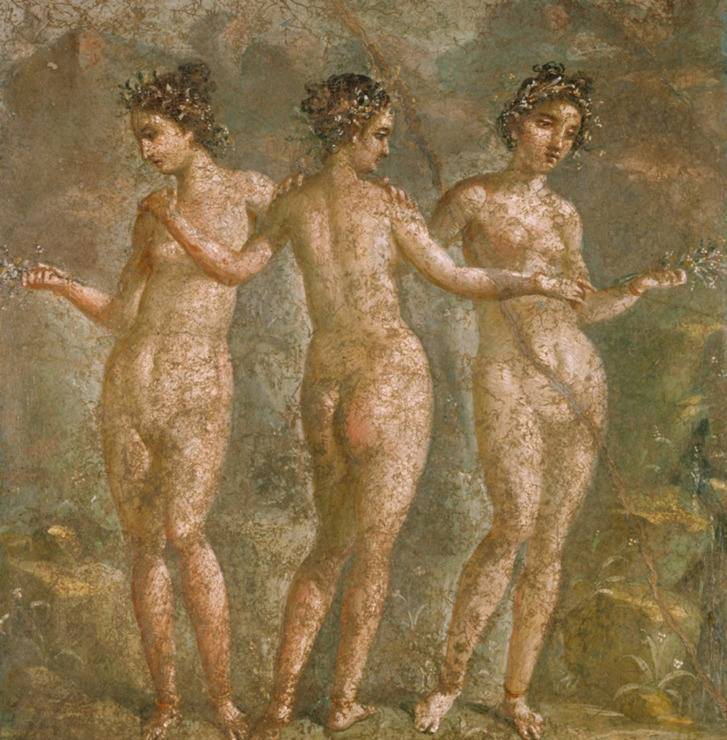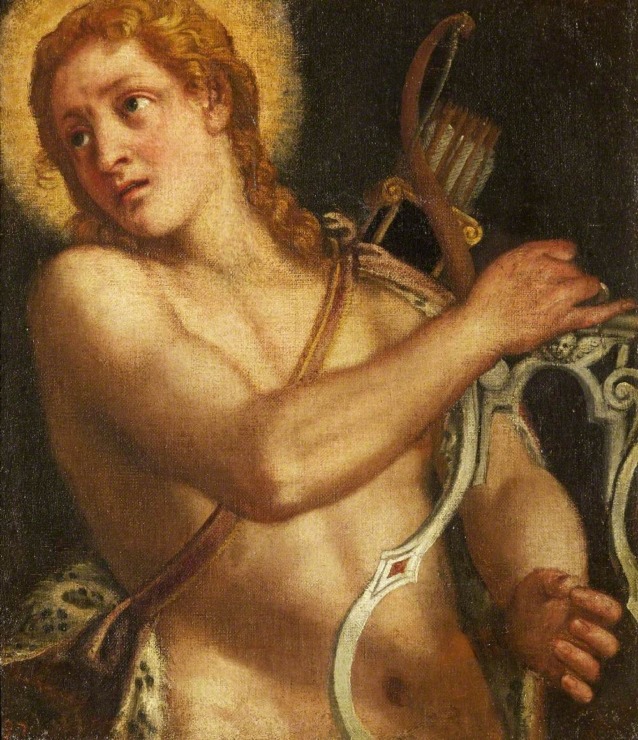Apollo to the Graces
APOLLO
Which of the fairest three
Today will ride with me?
My steeds are all pawing on the thresholds of Morn:
Which of the fairest three
Today will ride with me?
Across the gold Autumn’s whole kingdoms of corn?
THE GRACES all answer
I will, I – I – I –
O young Apollo let me fly along with thee,
I will, I – I – I –
The many, many wonders see –
I – I – I – I –
And thy lyre shall never have a slackened string.
I – I – I – I –
Thro’ the whole day will sing.
-John Keats
Enjoy Artistic Representations of “Apollo to the Graces” by John Keats

Pompeian fresco, The Three Graces.

Apollo with a Lyre attributed to Italian (Bolognese) School, ca. 1600-1629.
Watch this Video about the subject of “Apollo to the Graces”
Listen to Musical Interpretations of “Apollo to the Graces” by John Keats
John Keats Biography
Keats was born in London on Oct. 31, 1795; a few weeks later he was baptized at St. Botolph Without Bishopsgate Church, near where his parents lived and father worked as the manager of a stable owned by his father-in-law. Keats was the eldest of four children, with George, Tom, and Fanny following him. The family was well off enough that the boys were sent to Clark’s Academy in Edmonton at what is now the north London borough of Enfield for their education; it was riding his horse home from a visit to the school that Keats’ father fell and died the next day. His mother remarried (rather quickly, in fact), fought with the rest of the family, and died fairly young from consumption or tuberculosis, which was all too common at the time and would eventually claim the life of Keats’ youngest brother, Tom, as well as Keats himself.
He was apprenticed to a local doctor, but the relationship didn’t seem to work too well. He ended up working at St. Guy’s Hospital in the Southwark district of London, continuing his medical training and writing poetry (the site of the original St. Guy’s in now occupied by London’s tallest office building, known locally as “The Shard”).
While Keats had numerous city connections (Anita Miller also has a “Keats in the City” walk), it is with Hampstead that he is most closely associated. Fellow poets lived there, as did the editor who first published his poetry. Artists whom Keats associated with lived there. Keats himself would move there with his brothers. Keats and his friends would wander Hampstead Heath, talking and arguing poetry and the issues of the day. After moving into Wentworth House in Hampstead, Keats wrote five of six famous odes, including “Ode to a Nightingale.” And it would be at Wentworth House in Hampstead that Keats would realize that he was dying from the same disease that took his mother and younger brother.
Enjoyed Apollo to the Graces by John Keats and want to know more about Keats’ life? Try A Month With Keats: A Walk Into His Life
That’s it for Apollo to the Graces!
BUY ‘HOW TO WRITE A FORM POEM’ NOW!
